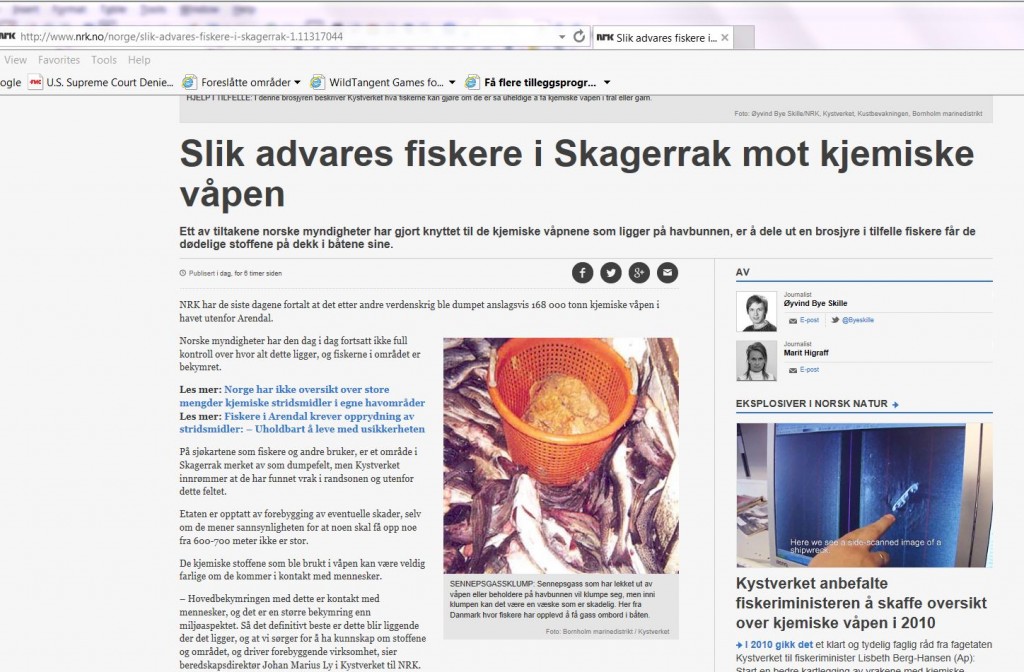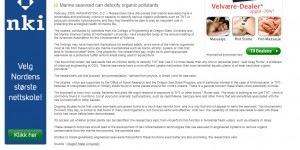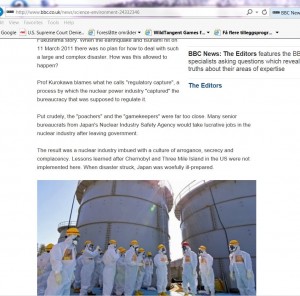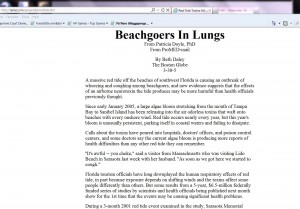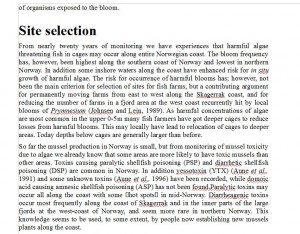https://en.wikipedia.org/wiki/Regulatory_capture
Page 1
Why Taretråling should be stopped
Seaweed harvesting on the scale that it is currently undertaken needs to be researched before it is allowed to continue for the following reasons
-
Historically there is evidence that it has been stopped in other countries due to changes it has wrought in the environment and ecology
-
There are currently major changes in the ecology of the worlds oceans – the cause is supposedly unknown. However if you combine the amounts harvested by all countries then the amount is considerable. No research is or had been conducted on the overall effect.
-
Seaweed binds an estimated 30 million tons of co2 endangering this is foolhardy.
-
Seaweed removes many dangerous chemicals and heavy metals from the sea – it is a vital defense against pollution
-
Norway top marine biologists have admitted in public they know nothing of the defense chemicals seaweed produces when under stress – the effect this is having on the ecology is unknown.
-
Norway’s top marine biologists have admitted in public they know nothing of the thiamine deficiency in seabirds that has been described decimating seabird populations.
-
Senior members of the fiskeriedirektoratet have been quite happy to make statements in public about taretrawlers and the current regulations which are untrue (at Trondheim)
Page 2
-
Attempts were made to prevent the first prosecution of taretrawlers for trawling in areas which were set aside for ecological reasons.
-
Senior members of fmc biopolymers are or have been employed by the fiskeriedirektortet and other marine protection organizations demonstrating captive regulation and a clear conflict of interest.
-
Taretråling now occurs along the entire length of the coast where there is enough weed to harvest – this has never happened before
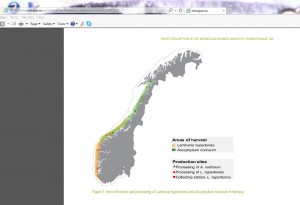
http://www.netalgae.eu/uploadedfiles/Norwegian_seaweed_industry_WP12.pdf
In the late 1800s a Japanese firm engaged in seaweed harvesting found that removing the weed from the seabed
Page 3
constantly led to unwanted species taking over the place of the original plant.
This led to cultivation as the only way forwards and is continued to this day.
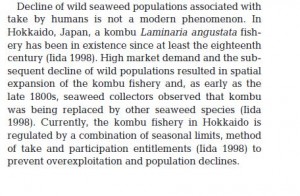
There is ample evidence to suggest that something similar is happening on the coast of Norway with the disappearance of sukker tare and other plants in skagerak
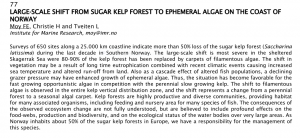
This is from the xx seaweed symposium 2010 in California
http://www.isaseaweed.org/pdf/XXISSFinalProgram.pdf
This article mentions the possibility of marine enrichment as a possible cause – as seaweeds remove large amounts of
Page 4
nitrogen, phophate and other chemicals it is entirely possible that a change in the amount of seaweed along Europe’s coasts may be responsible. Figures for the amount of Nitrogen that laminaria Hyperborea removes per year are very high – it is an estimated 480 tons per 20 square kilometers if the figures from the crown services document are to be believed.
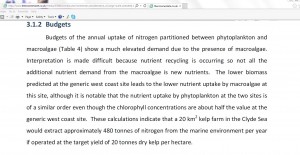
(this again from the crown services document)
http://www.thecrownestate.co.uk/media/358662/initial_environmental_consideration_of_large-scale_seaweed_farming.pdf
Further if the amount of Laminaria Hyperborea on the Norwegian coast is accurately accessed then the amount it removes is well over 100,000 tons per year.
To endanger this by allowing a American owned company (from a corporation with with possibly the worlds worst record of environmental pollution, permanent environmental damage, record fines for price fixing cartels and even record fines for fraud ) totally free access is reprehensible to say the least.
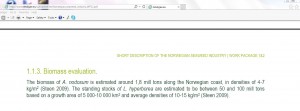
http://www.netalgae.eu/uploadedfiles/Norwegian_seaweed_industry_WP12.pdf
Unfortunately we have not been able to find out how this figure was arrived at.
This information comes from Netalgae sponsored by the European Union and other organizations. The documents also have information on the harvesting in
Portugal, France, and Spain.
https://hal-agrocampus-ouest.archives-ouvertes.fr/file/index/docid/840572/filename/3744.pdf http://www.netalgae.eu/uploadedfiles/Portugal.pdf
http://www.netalgae.eu/industry-directory.php
The combination of all this harvesting must be having a profound effect on the ecosystem – in fact France is still harvesting Calcified seaweed which is against the ospar agreement – the uk also harvested this for some years before it was banned.
Taretråling is illegal in the uk, in fact there is only one license for harvesting in the uk, and that is a one man operation and that is cutting by hand.
The netalgae document on Norwegian taretråling echoes all the other literature we have seen – essentially it says that the forests are harvested before they reach maturity – in other words there is a systematic attempt at lowering the amount of wildlife in the seaweed forests – apparently this is to produce a better alginate extract – but it may also have the effect of reducing the amount of food and its quality available
Page 6
for our fish and birds 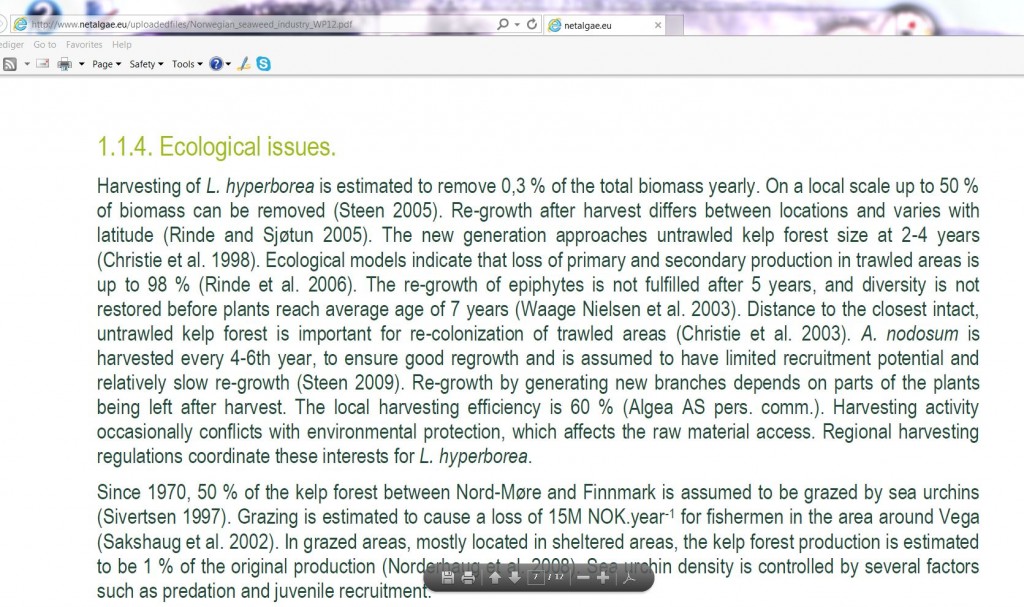
There is no doubt that the areas harvested are severely reduced in wildlife after the harvests and are not allowed to recover – this quite obviously affects bird and other wildlife as seen in this paper by sv lorentzen.
Essentially it says that the skarv are unable to survive after taretråling – this is noted in many parts of Norway by other observers. If it affects Skarv (cormorants) it also effects other birds – but unfortunately there seems to be no or little research on this issue.
The crown services document mentions iodine in the plants
We have found a report indicating this to be a powerful tool.
Page 6
In one nature reserve a group of 300 kodu were fenced in and had no other food – they all died within a very short period. It is reasonable to assume that the effect of major disturbance in a seaweed forest would be similar. If signals are passed from area to area it is possible that the overall effect would be to empty the forests.
https://spectregroup.wordpress.com/2010/01/08/acacia-self-defense/
After harvesting we have observed drifts of seaweed washed ashore at Hustadvika – sometimes as much as a metre deep – the stalks are completely bare of epiphytes. This is not a one off occurrence but happens every time they trawl and they trawl in the same area at Hustadvika for up to a year.
Unfortunately there seems to be very little research on the iodine issue – we asked the biologists present at the taretråling meeting in trondheim in public, if they knew anything about this – they answered they knew nothing – present were many leaders from the havsforsknings institut, nina etc.
Taretråling started in September of 2012 at Hustadvika – shortly afterwards we noticed that all the cod livers inshore had turned black or looked as if they were bruised. The livers were also severely reduced in size having a weak jelly-like appearance
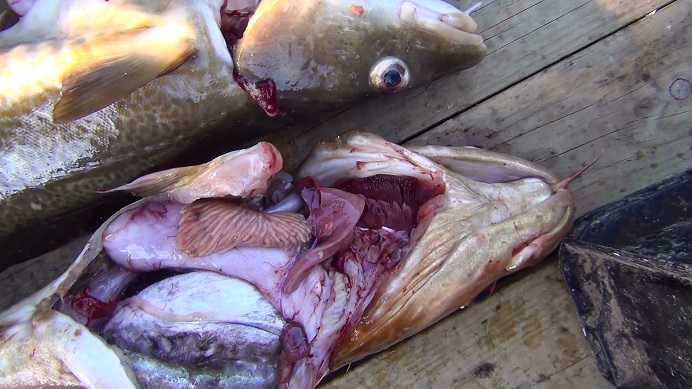
- Severely damaged liver from a cod caught at hustadvika
Later we noticed other species had similar – but they were all inshore, futher out the livers were normal. We contacted the mattilsynet – they told us this was normal but could not tell us why. They also refused our offer of liver samples.
Later we also wrote to the havsforsknings institut but received no reply.
Many of the papers we have read talk about fish livers being the first sign that there is something wrong with the environment.
We asked the mattilsynet if the livers were poisonous as many people here liked to eat them – in reply we got a article saying that you should not eat cod livers at all as many were too polluted https://www.matportalen.no/matvaregrupper/tema/fisk_og_skalldyr/ikke_spis_fiskelever_fra_selvfangst this led to a further article mentioning over 30 places on the coast of Norway that are so polluted that nothing from the sea should be eaten
http://www.miljostatus.no/Tema/Hav-og-kyst/Miljogifter_marint/Kostholdsrad/
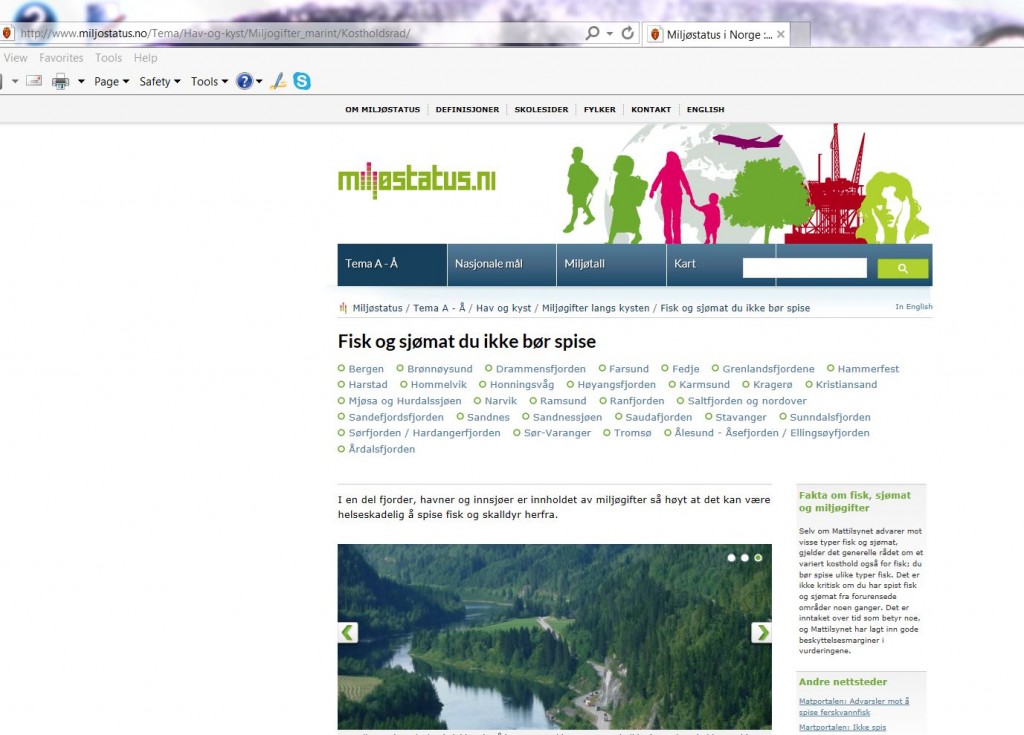
If this is the case then we should be looking to seaweed to clean up this mess
The Norwegian coast has a large number of wrecks containing everything from Mustard gas to high explosive – clear documented evidence shows that many species of seaweed remove tnt and other substances from the seas. Many Marine biologists point out that seaweed is the liver and lungs of the sea.
